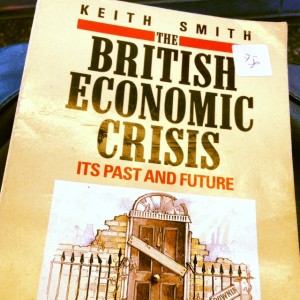I’ve nearly finished reading Joe Studwell’s excellent book, [amazon_link id=”1846682428″ target=”_blank” ]How Asia Works: Success and Failure in the World’s Most Dynamic Region[/amazon_link]. Both Tyler Cowen and Cardiff Garcia praised it in our recent Alphaville podcast conversation about economics books, so I obviously had to catch up.
[amazon_image id=”1846682428″ link=”true” target=”_blank” size=”medium” ]How Asia Works: Success and Failure in the World’s Most Dynamic Region[/amazon_image]
It is indeed worth reading, building on obviously highly detailed knowledge about the countries of East Asia to theorise about the policies that successfully encourage economic development and rising living standards. The book contrasts the development success of the northern economies of East Asia (Japan, South Korea, Taiwan, China) and the southern ones (Thailand, Indonesia, Malaysia, the Philippines). The compare and contrast approach leads Studwell to conclude that successful economic development takes the following path:
1. An initial land reform that breaks up plantation-style estates and redistributes land from landlords to tenants. Perhaps counter-intuitively, the application of a great deal of family-based labour on small farms has proven a far better footing than greater use of capital equipment at large scale for improving productivity. The evidence is that yields on the small plots of countries that did undertake land reform exceeded yields on large farms. In addition, the increased incomes of largely rural populations are vital for growing the domestic market for manufactures over time. However, land reform is politically difficult – the examples in Asia stemmed from great crisis. The redistribution also needs to be accompanied by a suite of policies to support agriculture, including extension support, rural credit and infrastructure investment.
2. The next stage is to grow domestic manufacturing. Studwell describes this as “protectionism”, whereas I would call what he depicts in the successful economies “industrial policy”. He rehearses the often-made argument that just as European economies and the US relied on tariff barriers to protect their infant industries in the 19th century, so the successful Asian economies built their manufacturing sectors behind protectionist walls in the 20th century. However, what he describes in the country detail is a policy much subtler than the use of trade barriers. Reading the examples, it seemed to me that the key elements were: (i) a willingness to use government funding to support domestic manufacturers until they reached a scale that would make them globally competitive – importantly, testing their competitiveness by making investment or subsidies depend on export volumes; (ii) opening domestic markets to imports of key inputs for exporters even at the expense of other domestic industries – in other words, not protection against imports so much as support including export subsidy for strategic sectors. One example is Japan’s decision to open the market to imported cotton, which did for its own cotton growers.
Now, it is true to say that the free-market philosophy driving economic policy since the 1980s means governments in the UK at least have self-amputated their ability to support manufacturing in this strategic way. Interestingly, Harold Wilson’s famous “White Heat of Technology” speech (link available on the Ballots and Bullets blog), 50 years old this week, reads as exactly the kind of long-term, market-tested intervention Studwell describes. Mariana Mazzucato has recently been beating the drum for a rediscovery of industrial policy with her very interesting book [amazon_link id=”0857282522″ target=”_blank” ]The Entrepreneurial State[/amazon_link]. It seems a no-brainer to me (to use the technical economics jargon). Maybe others hesitate because of the association with protectionism that helps lame-duck industries limp along, the picking of winners which turn out to be losers, but this is not what Studwell describes – and it’s why I think he is wrong to use the term “protection”. Setting aside the issue of the label, we need to (re-)learn this lesson from the Asian success stories.
The book also lacks in this section more analysis of how the policy needs to adapt to the world of extended supply chains of increasingly complex manufactured products. It is much harder for a poor country to find a role in global industries now than it was for Japan to reverse engineer washing machines in the 1960s.
3. The third stage extending the role of financial services, while keeping finance on a short leash. With hindsight, it is clear that the globalisation of the 1990s and 2000s over-liberalised high finance while not bringing necessary ‘low’ finance to billions of people with low incomes and no access to the formal banking and credit sector. Any economist who thought globalisation was a turbulent but broadly good thing (this includes me) surely has to accept that there was too much liberalisation of cross-border portfolio flows, and that emerging economies should keep the ability to control these flows in their policy armoury.
The book ends with a chapter on China that hedges its bets on the country’s prospects, pointing out the obvious institutional and structural challenges ahead. It also left me feeling pretty cautious about the prospects for sustained development in the region’s still-emerging economies such as the Philippines, Indonesia and Thailand – not much political prospect of land reform or reigning in the elites in those countries.
This is definitely one of the best books I’ve read on the region, and on economic development in general. It’s a model of tying together historical knowledge, empirical evidence and analysis. It is also a good complement to Justin Yifu Lin’s [amazon_link id=”0691155895″ target=”_blank” ]The Quest for Prosperity: How Developing Economies Can Take Off[/amazon_link], which sets out a Chinese policy maker’s perspective on the same questions regarding manufacturing.



